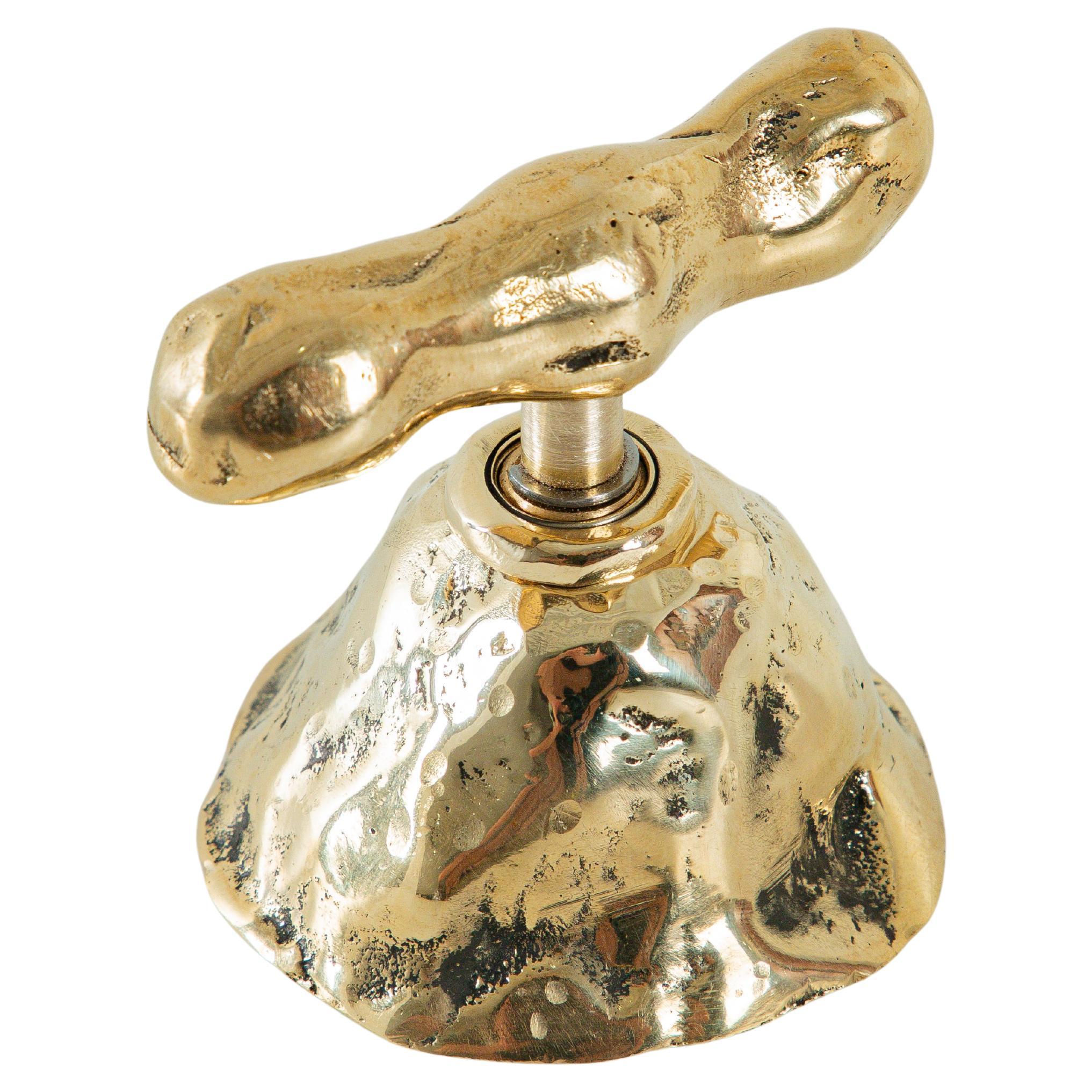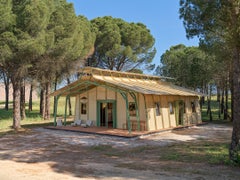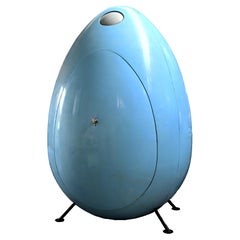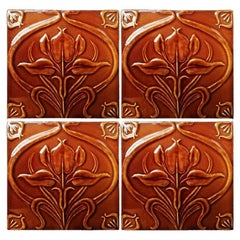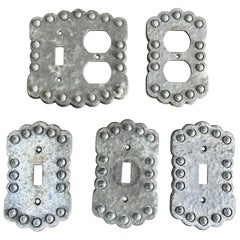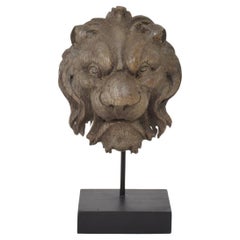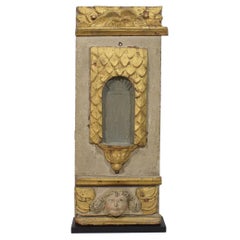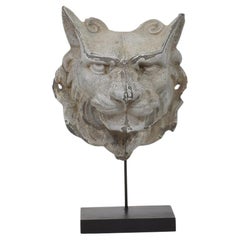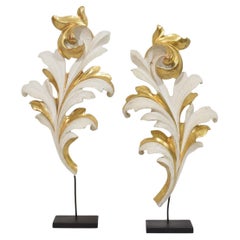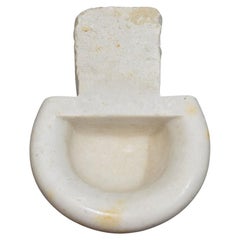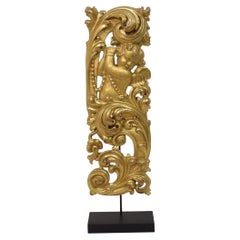Architectural Elements
to
583
1,979
1,569
3,234
388
47
Height
to
Width
to
238
181
135
132
120
109
108
99
95
82
80
64
53
41
37
13
11
5
720
1,280
1,234
435
406
413
226
48
10
87
63
33
70
80
79
14
20
1,261
1,213
927
598
455
2,436
888
553
539
494
3,669
3,424
3,545
60
35
24
20
15
Architectural Elements For Sale
Small 19th Century French Carved Oak Lion Head
Located in Buisson, FR
Beautiful small hand carved oak lion head with a strong expression..
Wonderful period piece with a beautiful weathered look.
France circa 1850-1900
Measurements include the wooden ba...
Category
19th Century French Antique Architectural Elements
Materials
Oak
$304 Sale Price
46% Off
17th Century French Carved Oak Baroque Altar Niche with Angel Head
Located in Buisson, FR
Unique carved oak Baroque altar niche with its original color and gilding.
France, circa 1650-1700. Weathered, small losses
Measurement includes the wooden base.
H:65cm W:27,5cm D...
Category
17th Century French Baroque Antique Architectural Elements
Materials
Wood
$1,069 Sale Price
54% Off
19th Century, French Zinc Mythical Lion- Wolf Head Fragment
Located in Buisson, FR
Beautiful and rare decorative zinc item that once graced a facade, France, circa 1850-1900
Weathered and small losses and old repair
Measurement here below includes the wooden base.
...
Category
19th Century French French Provincial Antique Architectural Elements
Materials
Zinc
$352 Sale Price
45% Off
Pair Italian 18/19th Century Hand Carved Giltwood Acanthus Leaf Curl Ornaments
Located in Buisson, FR
Beautiful handcarved giltwood acanthus leaf curl ornaments that once adorned a chapel .Original period pieces that due their high age have a wonderful weathered look.
Italy circa 178...
Category
18th Century Italian Antique Architectural Elements
Materials
Wood
$806 Sale Price / set
46% Off
18th Century Italian Baroque Marble Holy Water Font or Stoup
Located in Buisson, FR
Beautiful Baroque marble holy water font or stoup,
Unique and original period piece. Italy, circa 1750
H:12cm W:24,5cm D:18-33cm
Category
18th Century Italian Baroque Antique Architectural Elements
Materials
Marble
$949 Sale Price
55% Off
Large 18th Century Italian Hand Carved Giltwood Baroque Curl Ornament With Angel
Located in Buisson, FR
Beautiful and large handcarved giltwood baroque ornament that once adorned a chapel or a church.
It represents an baroque angel between acanthus leaves. Amazing period piece in a ver...
Category
18th Century Italian Baroque Antique Architectural Elements
Materials
Wood
$1,523 Sale Price
43% Off
Pair 18th Century Italian Hand Carved Giltwood Baroque Curl Ornaments
Located in Buisson, FR
Beautiful pair hand carved giltwood baroque ornaments that once adorned a chapel or a church.
Italy, circa 1750. Weathered, small losses and old repair. Measurement includes the wood...
Category
18th Century Italian Baroque Antique Architectural Elements
Materials
Wood
$472 Sale Price / set
46% Off
Medieval Gothic French Carved Stone Crowned Gargoyle Panel
Located in Buisson, FR
Original period piece. Extremely rare find. Carved stone gargouille Panel depicting a crowned gargoyle standing on a bird. Gargoyle, a word derived from the French 15th century word ...
Category
15th Century and Earlier French Gothic Antique Architectural Elements
Materials
Stone
$2,928 Sale Price
63% Off
18th Century Italian Carved Limestone Corinthian Capital
Located in Stamford, CT
18th century Italian Neoclassical carved limestone Corinthian capital. Weathered and broken, this architectural fragment makes an resonant outdoor or indoor decorative element.
Gre...
Category
Late 18th Century Italian Neoclassical Antique Architectural Elements
Materials
Limestone
M H Baillie Scott. An Exceptional Pair of Arts & Crafts Sliding Doors
Located in London, GB
M. H. Baillie Scott, attributed
An exceptional pair of Arts and Crafts exterior sliding doors, forming part of a larger architectural set by attribution to M. H. Baillie Scott.
A s...
Category
1890s English Arts and Crafts Antique Architectural Elements
Materials
Iron
French, 19th Century, Zinc Bacchus Head Ornament
Located in Buisson, FR
Very rare zinc Bacchus head that once graced a Parisian facade,
Original period piece, France, circa 1850-1900.
Weathered.
Category
19th Century French Antique Architectural Elements
Materials
Zinc
$448 Sale Price
52% Off
18th Century Italian Baroque Hand-carved Limestone Holy Water Font or Stoup
Located in Buisson, FR
Beautiful Baroque hand carved limestone holy water font or stoup,
Unique and original period piece. Italy, circa 1750. Good but weathered condition just as it should.
Measures: H:10c...
Category
18th Century Italian Baroque Antique Architectural Elements
Materials
Limestone
$1,164 Sale Price
50% Off
Antique 19th Century Victorian Brown Cast Iron Lady’s Hand Ball Door Knocker
Located in Greven, DE
Antique 19th Century Victorian Brown Cast Iron Lady’s Hand Ball Door Knocker
Continental
Cast iron
Late 19th Century
Dimensions: H x W x D: 5cm x 17.5cm x 5cm
This intriguing...
Category
Late 19th Century Victorian Antique Architectural Elements
Materials
Iron
18th Century Italian Hand Carved Giltwood Baroque Curl Ornament
Located in Buisson, FR
Beautiful handcarved giltwood baroque ornament that once adorned a chapel or a church.
Italy, circa 1750. Weathered condition. Measurement includes the wooden base.
Category
18th Century Italian Baroque Antique Architectural Elements
Materials
Wood
$471 Sale Price
46% Off
17th / 18th Century Italian Carved Stone Coat of Arms With Unicorn
Located in Buisson, FR
Very beautiful hand carved stone coat of arms with a unicorn.
Italy, circa 1650-1750. Weathered.
Measurement here below is inclusive the wooden base.
H:45,5cm W:27cm D:18,5cm
Category
17th Century Italian Baroque Antique Architectural Elements
Materials
Stone
$2,688 Sale Price
47% Off
Pair Late 18th Century French Neoclassical Carved Wooden Ornaments
Located in Buisson, FR
Beautiful pair 18th century neoclassical carved wooden ornaments.
France circa 1780.
Weathered, small losses and old repairs.
Measurements are individual and include the wooden base....
Category
Late 18th Century French Neoclassical Antique Architectural Elements
Materials
Wood
$471 Sale Price
33% Off
Huge Spanish Neoclassical Alabaster Urn Table Lamp with Winged Dragons
Located in Barcelona, ES
One of a kind Carved Alabaster Urn Lamp with Winged Dragon Handles, Spain, 1930s
This stunning Art Deco period alabaster lamp has an elegant neoclassical urn design with foliage carv...
Category
20th Century Spanish Neoclassical Architectural Elements
Materials
Alabaster
$5,113 Sale Price
20% Off
Pair 17/18th Century French Gilded Carved Oak Baroque Ornaments
Located in Buisson, FR
Wonderful pair of two baroque gilt oak ornaments,
France, circa 1650-1750. Weathered and small losses. Measurement here below of the largest one and includes the wooden base.
Category
17th Century French Baroque Antique Architectural Elements
Materials
Oak
$687 Sale Price / set
35% Off
Handmade 21st Century Resin Hardware Knob in Tortoise by Elyse Graham
By Elyse Graham
Located in Springfield, OR
Our signature experimental resin casting is now available as hardware for any cabinet, drawer, or door. Each resin piece we make is non-repeating and completely individual. We have ...
Category
2010s American Organic Modern Architectural Elements
Materials
Stainless Steel
39 Antique 18th C. Dutch Delft Tiles Blue & White Star Animal Rabbit Hound Deer
By Delft
Located in Dayton, OH
Lot of 39 antique 18th Century blue and white ceramic Delft tiles. The majority feature a circle design around various animals including rabbits, dogs/hounds/fox, deer/stag, horse, c...
Category
18th Century Dutch Georgian Antique Architectural Elements
Materials
Porcelain
$2,625 Sale Price
30% Off
18th Century Italian Painted Rococo Panel
Located in Charlottesville, VA
A vibrant 18th century Italian rococo panel with shaped silhouette, painted in ochre and celadon tones. The central figure—a cherubic child gathering wheat—is framed by ornate scroll...
Category
18th Century Italian Antique Architectural Elements
Materials
Wood, Paint
Italian Medieval Romanesque Carved Marble Capital Fragment
Located in Buisson, FR
Rare and beautiful small medieval treasure.
Hand carved Romanesque marble capital,
Italy, circa 1250-1400.
Weathered, small losses.
More photo's available on request.
H:15,5cm W:16c...
Category
15th Century and Earlier Italian Medieval Antique Architectural Elements
Materials
Marble
$1,164 Sale Price
45% Off
Large 18th Century Italian Hand Carved Giltwood Baroque Curl Ornament
Located in Buisson, FR
Beautiful and large handcarved giltwood baroque ornament that once adorned a chapel or a church.
Italy, circa 1750. Weathered/ small losses and old repairs. Measurement includes the ...
Category
18th Century Italian Baroque Antique Architectural Elements
Materials
Wood
$1,069 Sale Price
54% Off
1 of the 63 Art Nouveau Glazed Relief Tiles by Gilliot, circa 1920
By Gilliot
Located in Rijssen, NL
1 of the 63 handmade floral antique tiles wiht rich glazed colors. Manufactured around 1920 by Gilliot Hemiksem, Belgium.
Image on the tile in relief on light yellow ground. Very ni...
Category
Early 20th Century Belgian Art Nouveau Architectural Elements
Materials
Ceramic
19th Century, French Zinc Mythical Lion- Wolf Head Fragment
Located in Buisson, FR
Beautiful and rare decorative zinc item that once graced a facade, France, circa 1850-1900
Weathered and small losses but despite of its age in a good condition
Measurement here belo...
Category
19th Century French Antique Architectural Elements
Materials
Zinc
$687 Sale Price
35% Off
GLADDING McBEAN & CO. Terracotta Chimney Cap, Lincoln, California, c.1925
Located in San Juan Capistrano, CA
GLADDING McBEAN & CO. Terracotta Chimney Cap, Lincoln, California, c.1925. Makers mark to the top.
This piece also functions well as a decorative object, centerpiece, sculpture etc.
Category
20th Century American Mission Architectural Elements
Materials
Terracotta
Italian 19th Century Hand Carved Wooden Baroque Style Curl Ornament
Located in Buisson, FR
Beautiful handcarved baroque style ornament that once adorned a chapel or a church with a stunning blue color.
Italy, circa 1850. Weathered. Measurement includes the wooden base.
H:7...
Category
19th Century Italian Baroque Antique Architectural Elements
Materials
Wood
$591 Sale Price
44% Off
Neoclassical Cast Iron Wall Fountain Bowl Garden Planter Urn Sconce Lavabo 18"
Located in Dayton, OH
Vintage cast iron wall hanging fountain bowl / planter / garden urn. Demilune / half round shape with fluted Neoclassical styling and a flower on the drop finial.
Dimensions:
17.5" ...
Category
Mid-20th Century Neoclassical Architectural Elements
Materials
Iron
$304 Sale Price
30% Off
19th Century French Carved Wooden Lion Head
Located in Buisson, FR
Amazing hand carved wooden lion head with a strong expression..
Wonderful period piece with traces of old color.
France circa 1850-1900
Weathered. measurements include the wooden bas...
Category
19th Century French Antique Architectural Elements
Materials
Wood
$1,165 Sale Price
41% Off
Pair Pinecone Cast Stone Finials
Located in New York, NY
Pair pinecone cast stone finials. Vintage cast stone garden ornament finials in the form of an inverted pinecone or pineapple on socle base. Some small losses to out-turned leaves ab...
Category
1930s American Vintage Architectural Elements
Materials
Cast Stone
$1,300 / set
French, 17th / 18th Century, Carved White Marble Capital With Angel Head
Located in Buisson, FR
Spectacular hand-carved white marble capital with angel head.
Beautiful weathered white marble .
France circa 1650- 1750
Weathered
Measurements include the wooden pedestal
Category
18th Century French Antique Architectural Elements
Materials
Marble
$3,076 Sale Price
55% Off
Bronze Push-Pull Door Handle with Raised Abstract Design
Located in London, GB
A cast bronze push-pull door handle with raised abstract design. Mid to late 20th century, found in Germany.
A nice heavy piece with a dark applied patina. There are signs of wear, ...
Category
20th Century German Mid-Century Modern Architectural Elements
Materials
Bronze
$664 Sale Price
35% Off
Antique Fireplace Mantel
Located in Made, NL
Authentic French Louis XV Fireplace Mantel – 19th Century
This magnificent French Louis XV fireplace mantel is a fine example of 19th-century craftsmanship. Made from French limesto...
Category
19th Century French Louis XV Antique Architectural Elements
Materials
Limestone
$14,969
Black Basketball Backboard, Rim and Chain
Located in Portland, OR
Solid blackened oak backboard with powder coated hoop and chain. Regulation size, though can be made to custom dimensions or with other wood species. Comes with wall mounting bracket...
Category
21st Century and Contemporary American Modern Architectural Elements
Materials
Oak
$2,100 / item
Fireplace Screen in Metal with a Blackened Steel Finish Customizable
By Redsoul
Located in Seattle, WA
The Court Screen is a modern metal fireplace screen cover that can be used flush fitted into the fireplace opening or can stand right outside a ...
Category
2010s American Industrial Architectural Elements
Materials
Steel
$1,198 Sale Price / item
20% Off
Entrance or Passage Way Large Double Door Starburst Hardware Kit
Located in South Charleston, WV
Produced for clients not wishing to purchase out doors directly and to provide their own extant or newly purchased door for a modern look For use on exterior or interior doors. For ...
Category
2010s American Mid-Century Modern Architectural Elements
Materials
Brass, Stainless Steel
Square Bronze Push-Pull Door Handle with Raised Abstract Design
Located in London, GB
A square push-pull door handle with raised abstract design made of cast bronze. Mid to late 20th century, found in Germany.
A nice heavy piece with a dark applied patina. There are ...
Category
20th Century German Mid-Century Modern Architectural Elements
Materials
Bronze
$716 Sale Price
30% Off
Large Arts & Crafts Wrought Iron Chandelier for Dining Room or Restaurant Etc
Located in Lisse, NL
Great quality, forged in fire, castle design candle chandelier / pendant light.
This finer quality and all hand-forged, eight-light chandelier comes with some really beautiful detai...
Category
Early 20th Century European Arts and Crafts Architectural Elements
Materials
Wrought Iron
Large Medieval St. Wrought Iron Castle Chandelier for Dining Room or Restaurant
Located in Lisse, NL
Magnificent hand-forged castle-style eight-light chandelier, radiates quality and craftsmanship.
This good quality and all hand-forged, eight-light chandelier comes with some really...
Category
Early 20th Century European Medieval Architectural Elements
Materials
Wrought Iron
Vintage Carved Wood Architectural Grates 20thC
Located in Big Flats, NY
Vintage Carved Wood Architectural Grates Unsigned 20thC
Measures - 34.5"H x 17.25"W x 1.5"D
These vintage carved wood architectural grates feature scrollwork and floral motifs, typic...
Category
20th Century Architectural Elements
Materials
Wood
$600 Sale Price
20% Off
Gypsy Caravan Circa 1900 - Built by Watts of Bridgewater
Located in Bagshot, GB
Now I know we all wish to have that barn find, but this truly is a great barn find!!!
45 years it has been dry stored, and you can see from the condition that this original Gypsy Ca...
Category
Early 20th Century British Folk Art Architectural Elements
Materials
Wood
Vintage Dutch Delft Blue and White Tile Featuring a Heraldic Coat of Arms
By Delft
Located in Elkhart, IN
A beautiful hand painted blue and white Delft or French Provincial style ceramic tile featuring a stylized knight's armor and helmet, with a rhinoceros above a shield with two unicor...
Category
Late 20th Century Dutch Country Architectural Elements
Materials
Ceramic
Spanish 17th/ 18th Century Baroque Overdoor Pediment With Winged Angel Head
Located in Buisson, FR
Amazing baroque hand carved wooden overdoor pediment with beautiful winged angelhead. Original period piece with its wonderful color and gilding.
Spain circa 1650-1750
Weathered, sma...
Category
17th Century Spanish Baroque Antique Architectural Elements
Materials
Wood
$1,762 Sale Price
54% Off
15th C Gothic Tabernacle 4 ft.+ Rare Architectural Religious Art, Museum Quality
Located in Vero Beach, FL
15th century period Gothic Tabernacle, extremely rare (Medieval) architectural religious art, museum quality ecclesiastical altar piece.
This is an ...
Category
15th Century and Earlier German Medieval Antique Architectural Elements
Materials
Wood, Paint
$16,000 Sale Price
50% Off
Art Deco Cast Iron Christmas Tree Stand, Vintage, German, 1920s
Located in Nuernberg, DE
This beautiful antique green color cast iron Christmas tree stand, was made in Germany, in the 1920s or older. A nice addition for your Christmas decoration. It holds a stem up to 2 ...
Category
1920s German Folk Art Vintage Architectural Elements
Materials
Metal, Iron
Bronze Push-Pull Handle with Abstract Modernist Design, 20th Century
Located in London, GB
An unusual square push-pull door handle made of patinated bronze featuring a raised modernist design of overlapping loosely geometric shapes. 20th century design, found in Germany.
...
Category
20th Century German Mid-Century Modern Architectural Elements
Materials
Bronze
Rare France Limoges Porcelain & Bronze Bathroom Set Washbasin Mirror Pendant Etc
By Limoges
Located in Lisse, NL
Highly decorative porcelain bathroom set with stunning roses pattern, by one of Europe's finest.
Over the years we have sold very few porcelain Limoges pieces and that is simply because these high value items don't find there way to the open market very often. So to have been given the opportunity to purchase a set as complete and remarkable as the one we are offering you here, more than made our day. Also, because we already know that someone will be thrilled to be able to own and use this rare and beautiful set in their (new) home or, for example, in their holiday home. This vintage Limoges set of high quality and detail consists of the following:
- A practical size washbasin with gilt bronze mythological dolphin handles.
- Large mirror in stylish bronze frame with a mounted (or built-in) 4-light sconce.
- A porcelain shelf (for wall mounting) to go under the mirror.
- A bronze and porcelain, 4 light pendant light.
- A shell design porcelain and bronze soap holder (for wall mounting).
- A toilet paper holder with some damage (we therefor listed this set as a five-piece set).
The two stunning bronze dolphins used to be the handles with which you could turn on the cold and hot water, but at some point in time the actual water tap...
Category
Mid-20th Century French Mid-Century Modern Architectural Elements
Materials
Bronze
Pair 19th Century, French Zinc Mythical Lion- Wolf Head Fragments
Located in Buisson, FR
Beautiful and rare decorative zinc item that once graced a facade, France, circa 1850-1900
Weathered and small losses but despite of its age in a good condition
Measurement here belo...
Category
19th Century French Antique Architectural Elements
Materials
Zinc
$686 Sale Price / set
41% Off
2 Petite Pairs of Reclaimed Oak Arched Domed Window Storm Shutters 17" x 33"
Located in Dayton, OH
Two matching pairs of vintage window storm shutters. Made of oak with an arch shaped with axe head shaped cut outs. Contemporary hinges.
Dimensions:
16.75" x 0.75" x 32.5" (Width x ...
Category
Late 20th Century American Arts and Crafts Architectural Elements
Materials
Oak
$262 Sale Price
30% Off
Italian 18/19th Century Hand Carved Giltwood Acanthus Leaf Curl Ornament
Located in Buisson, FR
Beautiful handcarved giltwood acanthus leaf curl ornament that once adorned a chapel .Original period piece that due it’s high age has a wonderful weathered look.
Italy circa 1780/...
Category
18th Century Italian Antique Architectural Elements
Materials
Wood
$448 Sale Price
46% Off
Pink Stone Architectural Plinth
Located in Chicago, IL
Carved from warm pink Cantera stone, this architectural fragment—likely Mexican in origin—offers a beautifully weathered glimpse into classical design. Rectangular in form and substa...
Category
20th Century Mexican Neoclassical Architectural Elements
Materials
Stone
Vintage Elm Wood Wheel Decorative Accent for Bookcase or Table
Located in Old Town Orange, CA
These vintage wheel once held iron carriage wheels, these center make beautiful decorative objects or vessels for an arrangement.
7” diameter x 6.5” tall
Category
19th Century Antique Architectural Elements
Materials
Elm
Antique Stone Neoclassical Ionic Column Capital Stand, 19th Century
Located in Elkhart, IN
A stunning Greek or Roman Neoclassical style cast stone Ionic column capital. This piece of architectural salvage would make a lovely objet d'art, ...
Category
Late 19th Century American Neoclassical Antique Architectural Elements
Materials
Cast Stone
Late 19th Century Wrought Iron & Marble Radiator Cover from a New York Apartment
Located in Philadelphia, PA
This Late 19th Century Wrought Iron and Marble Radiator Cover is a beautiful and functional addition to your classic home. The wrought iron frame adds a touch of elegance while the m...
Category
Late 19th Century North American Greek Revival Antique Architectural Elements
Materials
Marble, Iron
17th/ 18th Century Italian Baroque Marble Holy Water Font or Stoup
Located in Buisson, FR
Beautiful Baroque marble holy water font or stoup,
Unique and original period piece. Italy, circa 1650-1750. Weathered condition with some minor cracks that have no influence on the ...
Category
17th Century Italian Baroque Antique Architectural Elements
Materials
Marble
$806 Sale Price
50% Off
Pair Of Grand Scale French Iron Lions' Heads
Located in Round Top, TX
A very impressive grand scale pair of Napoleon III 19th century Lions' Heads beautifully cast in iron. A wonderful statement for any entryway.
Category
Mid-19th Century French Antique Architectural Elements
Materials
Iron
$15,500 / set
19th Century Italian Hand Carved Giltwood Baroque Style Curl Ornament
Located in Buisson, FR
Beautiful handcarved giltwood baroque style ornament that once adorned a chapel or a church.
Italy, circa 1850. Weathered and small losses. Measurement includes the wooden base.
H:31...
Category
19th Century Italian Baroque Antique Architectural Elements
Materials
Wood
$352 Sale Price
48% Off
Jean Prouvé Mid Century "CIMT" Aluminum Facade Panel Produced in France, 1950s
By Jean Prouvé
Located in Stockholm, SE
Rare French mid century aluminum "CIMT" architectural facade panel by Jean Prouvé for Campus Scientifique De La Doua in Lyon, France 1950s. In good vintage and original condition.
...
Category
1950s French Mid-Century Modern Vintage Architectural Elements
Materials
Aluminum
Alvar Aalto Sculptural Door Handles/Pulls in Cast Bronze, Valaistustyö 1950s
Located in Helsinki, FI
Two sleek, heavy and elegant mid-century door handles in full bronze. Manufactured by valaistustyö and designed by Alvar Aalto himself. Very practical yet stand out as sculptural pie...
Category
1950s Finnish Mid-Century Modern Vintage Architectural Elements
Materials
Bronze
Large Royal Coat of Arms Hand Painted on Wood
Located in Douglas Manor, NY
5099 English heroldry wall panel .
Hand painted Oil on wood
Latin Inscribed "Dieu Et Mon Droit" God and My Right
Category
1950s Vintage Architectural Elements
Materials
Plywood, Paint
Still Thinking About These?
All Recently ViewedMore Ways To Browse
Iron Balcony Railing
Iron Corbels
Iron Greenhouse
Lightning Rod
Monastery Doors
Romanesque Capital
Used Stair Railings
15th Century Architectural Fragment
15th Century Coffer
Antique Lightning Rod
Antique Plaster Corbels
Art Deco Grill
Chinese Green Tiles
Copper Corbels
Figural Corbels
French Devres Tile
French Wrought Iron Railing
Gothic Salvage
